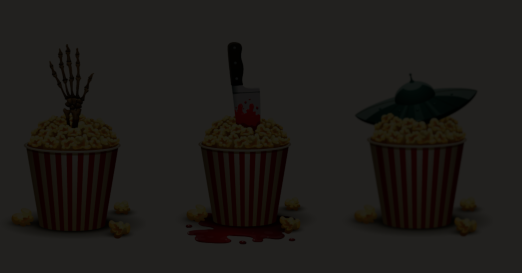


In 2010, the Saw series cemented itself as one of the most successful horror series’ in history, with the seventh installment alleged as the final film and Konami‘s followup to Saw: The Video Game, aptly titled Saw II: Flesh & Blood released a week prior, the series was no doubt going out in fashion. As I discussed earlier, Saw VI (which I considered the third best film overall – placing it as “Decent”) was a disappointment at the box office, and, in result of that, Twisted Pictures and Lionsgate reacted. Original plans called for a Saw 7 and a Saw 8, but when 6 made about half of what the Wan and Whannell created series had in its heyday, it was decided they should merge the two ideas, squishing it together, and creating Saw 3D: The Final Chapter.
The film received very negative reviews from critics and moviegoers often regard it as the worst in the series. Regardless, the box office reception was enthusiastic. The film doubled the last film, benefited by the “Final Chapter” tagline and the marketability that existed for 3D in that period.
Directed by Kevin Greutert (back again after Saw VI), the seventh installment was once again written by Patrick Melton and Marcus Dunstan. The film stars familiar faces like Tobin Bell as John Kramer, through the use of flashbacks, his wife played by Betsy Russell, his successor Mark Hoffman portrayed by Costas Mandylor, and the return of Cary Elwes as Dr. Lawrence Gordon from the first film.
Likewise to Saw VI, I believe that The Final Chapter has a better wraparound character arch for its victims than 4 and 5, respectively. While it doesn’t offer a lot of new ideology, it does offer a satiable subplot about a man named Bobby Dagen, played by Sean Patrick Flanery. Sean’s character can best be described as a marketer and an exploiter – writing a book about himself and the struggles he was dealt since participating in one of Jigsaw’s tests. The only problem is, Bobby has never encountered The Jigsaw Killer and is lying for the fame and notoriety of it all. This, as you can expect, leads to The Jigsaw Killer targeting him, and although the film doesn’t offer enough development or consideration to the character in-order to elevate him as a standout highlight among the series, it is entertaining and palatable to watch, assuming you are desensitized by bloodshed like yours truly.
Meanwhile, Detective Hoffman is on the run. After the great scenes from the last film, which saw him escape the Bear Trap and off a few detectives for good measure, everyone is now on the hunt for him. Hoffman is allowed the upper-hand on occasion, and even has one moment in-particular that pays off in a similar way as scenes from the sixth film, but it feels too far and in between.
The film feels very abrupt and uneven with the rest of the series in some respect. This can be seen front-and-center with the opening scene of the film, a trap that happens out in the open for the whole public to see. As unique an idea as that sounds, the execution feels glossy and very produced, with acting that’s corny even by series standards, and a scenario that even borders the series in the realm of self-parody. A lot of the film can feel like business as usual, for better or for worse, but some moments, like the first, stand out as very odd and inconsistent with the series’ established convention.
There is fun to be had in the film. If you have ever wanted to see Chester Bennington from Linkin Park (morbidly unfortunate now in hindsight, given his tragic death) participate in one of Jigsaw’s traps, that’s in there, and it’s even one of the funner traps. The 3D implementation is mostly inconsequential and isn’t as egregious as it could have been. If not for the occasional scene that forces the fact, like someone throwing an object toward the camera, I would have forgotten it was their intention for the film.
I would describe the acting of Betsy Russell, Tobin Bell, and Costas Mandylor to be on-par with their performances for the series altogether (solid), and I think Sean Patrick Flanery feels how his character is meant to feel. Cary Elwes, on the other hand, I have to say, really hams it up in his brief scene of dialogue, coming off like a supervillain in a melodramatic cartoon.
Whereas I don’t believe Saw 3D is the worst film in the series, I do believe it personifies every bad aspect of the Saw series better than any film prior to it. The film too often goes back to the well in-order to create contrivances and retroactive connective tissue that has never felt more transparently absurd.
Couple that in with the dissonance of the cinematography, the quality-of-life distilled by the 3-D marketing gimmick attached to it, and we’re left with a film that doesn’t add a tally to the win column. All of the blood in Saw: The Final Chapter is pink in-order to appear red in 3D viewings, which makes sense on some level. However, because 3-D is a novelty that is dead allover again and the 2D versions don’t mitigate that discrepancy, we are left with buckets upon buckets of pink alien blood.
Saw 3D is a bad film, but inline with the series’ averages. If the Saw series was a heart monitor, and the original, Saw III, and Saw VI were signs of life, then Saw 3D is a flat-line.

